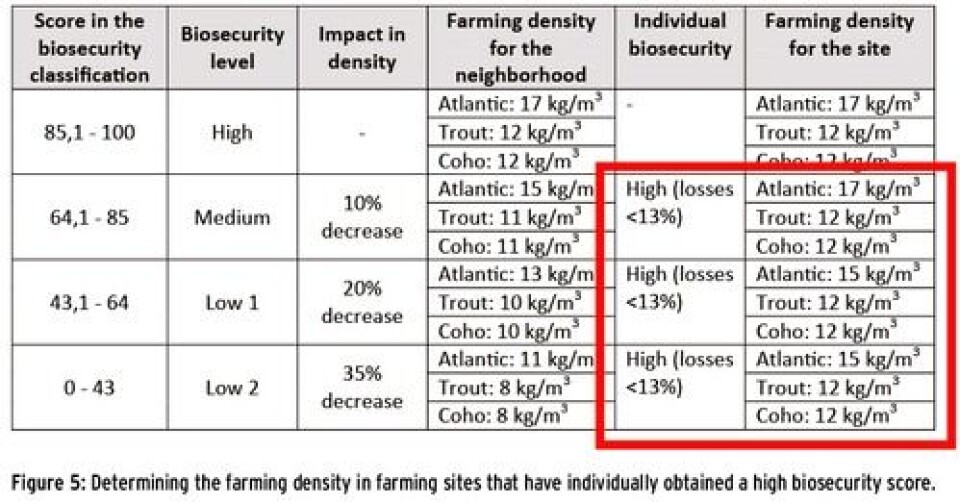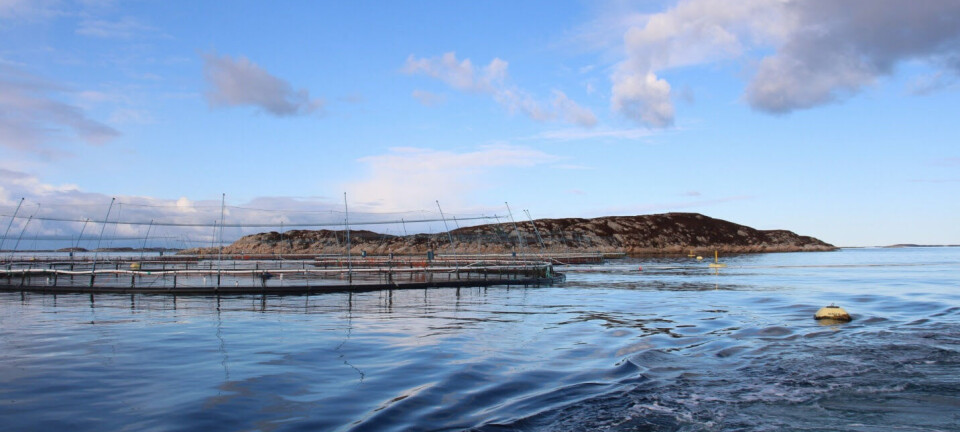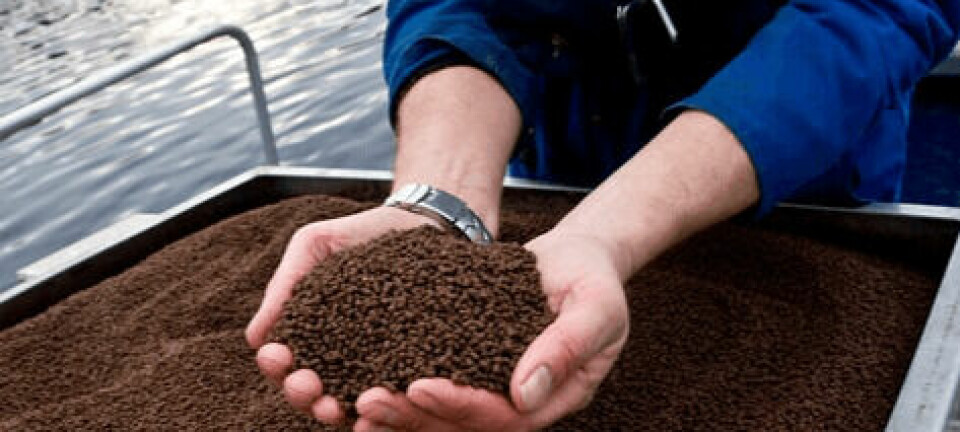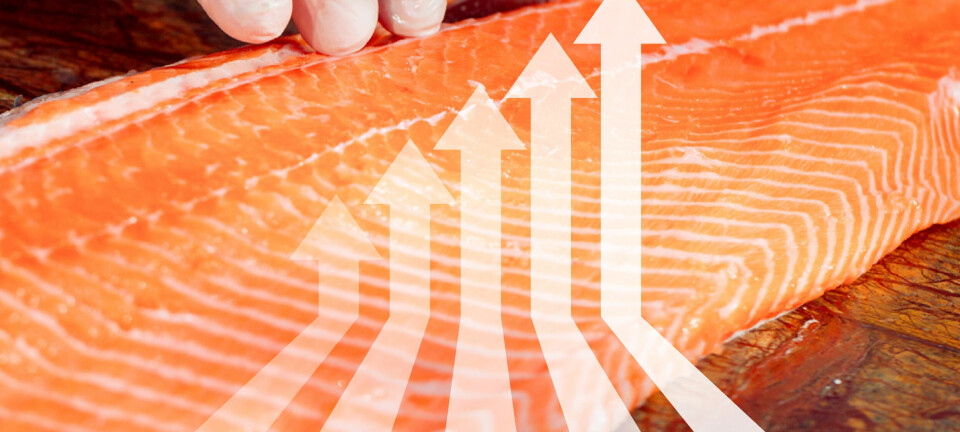New regulation on stocking densities Looking at the individual and collective performance
By Christian Perez Mallea
The new regulation for salmon stocking densities in Chile will come into force by the beginning of 2014. From then onwards, the performance of the different groups of aquaculture licenses for salmonids or salmon neighbourhoods, will be an important criterion to consider. That is, not only the individual behaviour will be relevant, but also the average outcome in the neighbourhood where each fish farm is located.
This regulation is the result of joint work between the Undersecretariat of Fisheries and Aquaculture (Subpesca), the National Fisheries and Aquaculture Service (Sernapesca), the Ministry of the Economy and the salmon industry, represented by the Association of the Chilean Salmon Industry (SalmonChile), the Association of Coho Salmon and Trout Producers (Acotruch), as well as representatives of producing companies not affiliated to any guild.
By considering the collective performance, this standard makes the awareness of the behaviour of others “neighbours” more relevant, as well as taking joint actions with them. In that sense, it is not improbable that after implementation, neighbourhoods will be more oriented to mono-crop species instead of multi-crop species.
Finally, although there is no data available regarding the impact of these changes on the production costs, several estimates indicate that it could increase. However, since this is a biosecurity measure aimed at mitigating the emergence of a new spread of diseases, its influence should also be weighed in terms of benefits.

The path to the current regulation There are reports, prior to the appearance of the Infectious Salmon Anemia virus (ISAv) in Chile, which recorded Atlantic salmon farming densities -of over 31 Kg/m3. This was justified by companies as a need to meet the growing demand in international markets.
In 2009, the Authority issued the Exempt Resolution No. 1449/2009, which set maximum farming densities designed to mitigate the occurrence of new outbreaks. This resolution determined the maximum farming densities per species as follows: 17 Kg/m3 for Atlantic salmon, 12 Kg/m3 for Coho salmon and rainbow trout, and in the case of Chinook salmon, 10Kg/m3.
Meanwhile, by the year 2010, a decrease in farming densities for the three salmonid species most cultivated in Chile was being observed., This formed part of a national trend in the industry to increase the production more sustainably under more strict sanitary regulations. Accordingly, the average farming density was 10-15 Kg/m3 in Atlantic salmon, 9-15 Kg/m3 in Coho salmon and 8-15 Kg/m3 in the case of rainbow trout.
The new regulation has already been approved by the National Commission of Aquaculture (CNA) and is to -be signed soon by the Ministry of the Economy. Later, the regulation will be sent for Presidential promulgation and it ultimately needs to be approved by the Treasury Inspector’s office within the first half of 2013.
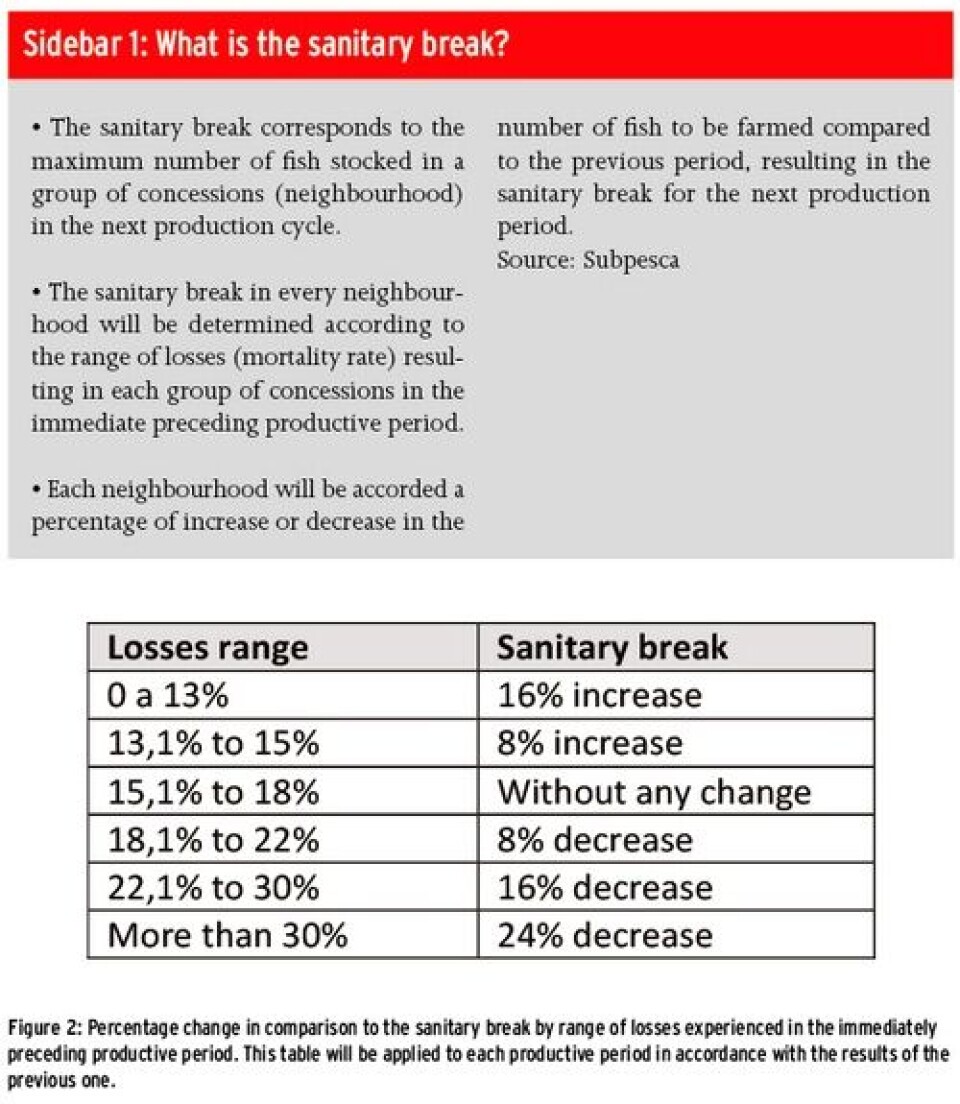
Proposal for a regulation As reported by - Subpesca, the regulation on densities,which will become part of the Sanitary Regulation (RESA), defines - farming density as the “existing biomass of fish per area within farming structures by the end of the fattening stage”. This rule considers two phases when determining the farming density per neighbourhood: classification of neighbourhoods (under which will be set a common farming density for each neighbourhood) and setting the maximum number of fish allowed in the farming structures of each site.
In addition, the classification of neighbourhoods will consider three criteria: environmental, sanitary and productive.
Environmental criteria look at the results of the Environmental Reports or INFAs of every farm of the neighbourhood. These results exhibit the aerobic condition in each site. Sanitary criteria, consider the losses of the neighbourhood during the productive period in question; while productive criteria, compare the projected number of smolts to be planted in the neighbourhood for the following period against the “sanitary break” (Sidebar 1).
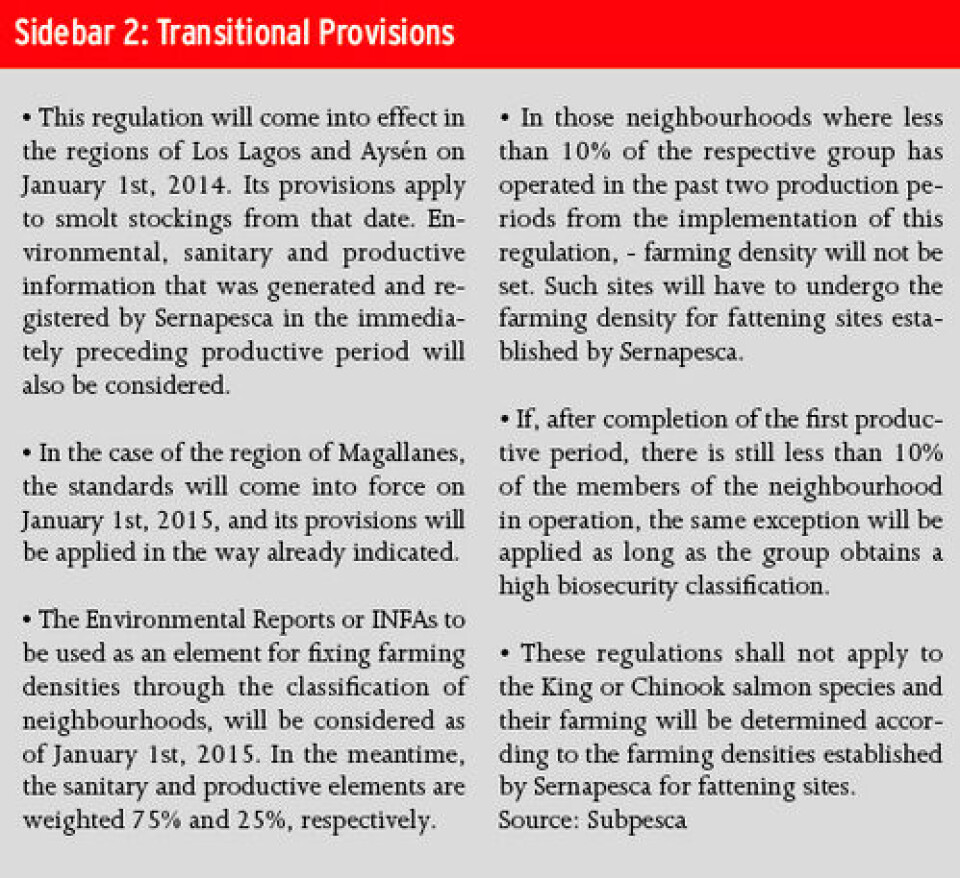
In turn, the number of fish to be stocked in each structure is obtained by dividing the product of the usable volume, farming density and harvest weight by the expected survival percentage according to the following formula:
No. of fish to plant = (Usable volume x farming density at harvest kg/m3) / Harvesting weight Survival %
Thus, according to the head of the Aquaculture Department Subpesca, José Miguel Burgos- the following scenario could follow: a neighbourhood that has only a few farms, each one with a high sanitary score and other neighbourhoods with many sites with poor sanitary performance. “The normal tendency would be for companies to want to produce in those neighbourhoods which are allowed to farm at a higher density” Burgos said, pointing out that, in order to avoid that situation, Subpesca has incorporated an element that compares the previous number of stocked fish with the next one. As a result, excessive increments will be penalized with a lower maximum farming density, becoming a disincentive to move to those neighbourhoods - with good production results.
Effects of the new regulations
According to the president of Acotruch, Julio Traub, there is no clarity yet on how much the costs could increase with the implementation of this new regulation on densities. However, there are estimates indicating that the total costs of the new regulations will add another US$ 0.50 to 0.70 per kg of fish produced, “and this value is extremely high,” he added. In contrast, he considers that the new maximum densities established by the Authority should not mean a radical change in practical terms, “except for Atlantic salmon, which I understand is usually grown at higher densities,” he said.
Hernan Cañón, Ph.D., a researcher in the Aquaculture Research Division of the Fisheries Development Institute of Chile, - estimates that this regulation is quite adequate. “It is mainly based on establishing an initial density, which can be adjusted, assuming that the densities are directly associated with the presence of disease,” he concludes.

However, he warned that there is little empirical evidence to support that an increase in the density effectively causes disease or, conversely, a decreased density reduces the risk of disease: “fundamentally because density has been conceived as kilograms per cubic meter instead of number of fish in this regulation. In terms of disease, the density in kg/m3 is as important as the number of fish, because that can mean a greater number of hosts,” he said. Meanwhile, Hans Steffens, risk advisor specializing in aquaculture, says that an excess of regulation is hampering the understanding between the insurance industry and salmon producing companies., This is due to the fact that - insurance companies are accustomed to the salmon industry setting limits on the coverage and guarantees when drawing up insurance policies. “There are regulations that are efficient in implementing standards, but too much regulation hinders clarity on how the insurance market should act in the future,” he concludes. Steffens believes that this new regulation will have an impact on the premiums to be paid by insured companies, although he does not know yet what kind of effect it will have. From multi-species to mono-species
The health manager of Salmones Camanchaca, Álvaro Pérez, believes that companies will have to prioritize the neighbourhood of each farming site as a result of this new rule, getting to know the neighbours and their farming practices and the species that are farmed there as well. “Obviously, we are going to be interested in those neighbourhoods with lower mortality rates, which today are associated with sites that grow Atlantic salmon and Coho salmon. Therefore, if we have neighbours farming trout, this would affect our future stocks due to the high mortality rates of this species. Since this is an assessment component of the density score, it will affect the whole situation negatively “, he adds.
He explained that before stocking Atlantic salmon in 2010, after the appearance of the ISA virus, Camanchaca had already defined the risk in each one of its neighbourhoods. Some of the components in that evaluation consider what other companies are present in their neighbourhood and what species they farm. “We favour those neighbourhoods where just one species is being farmed or we try to lower the stock level in those places where there is a higher risk. In that sense, Rainbow trout and its problems with SRS involve much more risk to us than Atlantic salmon and Coho salmon,” he explains.

In this regard, José Miguel Burgos believes that given this condition, there will probably be greater production specialization in every neighbourhood. That is, more mono-species farms instead of multi-species farms. “In some ways, this is quite beneficial and in others, it has some additional complications,” he comments. For example, he explains that in the case of an ISAv outbreak, the presence of neighbourhoods exclusively farming Rainbow trout or Coho salmon could become a barrier or relevant element to avoid a spread of the disease, since both species are immune or resistant to ISAv. “However, this situation varies from disease to disease,” he says.
Moreover, Mr Burgos states that the Authority expects the industry to start working with the management and operation methods provided by the system of neighbourhoods. “We need them to reach agreements and this measure somehow pushes them to establish joint measures to get a good result and not only for one farming site but for all farms.
Sufficient oceanographic studies -, as well as studies about the loading capacity in the various water bodies have not yet been carried out. , Appropriate studies could provide more support to the long-term determination concerning maximum farming densities for salmonids. This holds true especially when dealing with this issue from an environmental point of view. However, these new rules appear to be a breakthrough in the development of control criteria.
The of agreement reached by salmon producing representatives and the Authority at top level is also highly remarkable. This seems to indicate a willingness for dialogue that is essential for the future of the whole industry.
